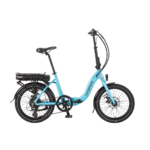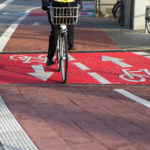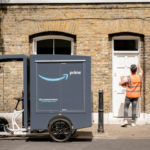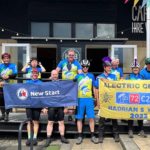Think
I don't agree at all with much of what is written above. I think people are getting a bit mixed up.
All BLDC motors, whether crank-motors or hub-motors behave the same. They produce maximum torque at zero RPM and zero torque at maximum RPM.
Efficiency is different. It's zero at zero and maximum RPM, and it peaks at about 75% of maximum RPM.
Peak power comes at about 65% of maximum RPM.
Overall efficiency of battery use from the rider and motor has little relationship to motor efficiency. The situation is completely turned on its head because you can adjust the motor's power or torque from the control panel. Maximum battery efficiency will come when you set the assistance to zero. Everything else depends on how hard you pedal and what your cadence is. Trying to keep the motor at its most efficient speed will not give you good efficiency. The only thing that gives you good efficiency is to pedal harder.
If you want to climb hills with the minimal effort, turn the power up to the maximum and pedal slowly. If you want to go up hills as fast as possible, turn the power up to maximum and pedal at the speed that you can make your maximum power. If you want to go up a hill with the least amount of battery, select zero assistance and the lowest gear, then pedal as hard as you can.
Think you are over simplyfying real world situation.
You are perfectly correct the motors mentioned do give max torque at zero rpm but at approaching zero rpm are woefully ( for e motors) inefficient. ( sub 60 %)
Efficiency varies between around 72 % at 1500 rpm up to max of 97% at between roughly 2200 to 2800, and then falls back to 80% or so at max rpm ( profile graph I found gave maxx rpm 4800)
Therfore it stands to reason to keep motor at as near 2500 for max efficiency.
Arguments around electric motors not requiring gears fail to recognise fact that in our application motor is way underpowered for job in hand. And the fact that mtb cover a massive range in applications..from 35 mph down some path to slow technical ascent of single track. Imagine been in wrong gear for either and effect it would have on efficiency, yours and motors. Cant think of another vehicle requiring such a range of gearing ??
We have limited torque,power available and power stored. In this scenario gear box can have a massive effect on efficiency. ( only my thoughts)
You often hear people say e motors do not need gearboxes, strictly speaking that is completely wrong. They generally do not need multiple speed reductions, which is different. Few operate direct and those that do tend to be inefficient. Once application requires a multi speed gearbox, it stands to reason the use of that gearbox must affect overall efficiency.
I,m trying to establish the style of riding a mtb mid drive pedelec ( in this case Yamaha) to give maximum aid for minimum current draw? Perhaps there isn't one ?
And BTW merely pedaling harder has nothing to do with efficiency,just go back to none electric with zero current draw, and of course the 100 year argument about most efficient cadence rate. ???






